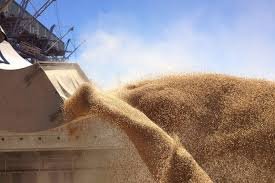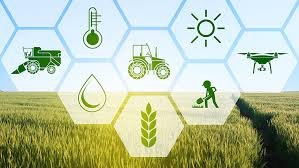First Tripartite MoA signed to address the Infrastructure needs for fisheries
The first tripartite Memorandum of Agreement was signed between the department of Fisheries Government of India, NARBARD and the Government of Tamil Nadu for the implementation of Fisheries and Aquaculture Development Fund (FIDF).
Speaking on the occasion Giriraj Singh, Union Minister for Fisheries, Animal Husbandry and Dairying said that a dedicated fund has been created namely the Fisheries and Aquaculture Infrastructure Development Fund with a total of Rs. 7522.48 crore to address the infrastructure requirement for fisheries sector. He urged the coastal states to pay attention to deep sea fishing, post harvesting, and cage culture and export promotion. FIDF provides concessional finance to the eligible entities, cooperatives, individuals and entrepreneurs for development of identified fisheries infrastructure. The National Bank for Agriculture and Rural Development (NARBARD), National Cooperatives Development Corporation (NCDC) and all scheduled banks are Nodal Loaning entities (NLEs) to provide concessional finance under the (FIDF).
The Department of Fisheries, Ministry of Fisheries, Animal Husbandry and Dairying under the FIDF provides interest subvention up to 3 percent per annum for providing the concessional finance by the NLEs at the interest rate not lower than 5 percent per annum.
Tamil Nadu Government to get Rs 420 crore for development of three fishing harbours
The Government of Tamil Nadu has signed the first Tripartite MoA for availing the initial concessional finance of Rs 420 crore from NARBARD for development of three fishing harbours in the State namely, (i) Tharangampadi in Nagapattinam district, (ii) Thiruvottriyur Kuppam in Tiruvallur district and (iii) Mudhunagar in Cuddalore district. These will create safe landing and berthing facilities for a large number of fishing vessels plying in the area, augment fish production in the regions, facilitate hygienic post–harvest handling of fish, stimulate growth of fisheries related economic activities and employment opportunities.
NABARD as one of the Nodal Loaning Entities (NLEs) provides concessional finance for development of fisheries infrastructure facilities through State Governments/State Entities under the FIDF, after execution of the Tripartite MoA. Proposals to the tune of Rs.1715.04 crore received from various State Governments and other Eligible Entities (EEs) have been recommended as date by the Central Approval and Monitoring Committee constituted in the Department for consideration under FIDF. The project proposals of Government of Tamil Nadu and Andhra Pradesh for development of fishing harbours in their respective States form the major part of these recommended projects.
Rajni Sekhri Sibal, Secretary, Department of Fisheries, Government of India, Dr Harsh Kumar Bhanwala, Chairman, NABARD, Dr J Balaji, Joint Secretary (Fisheries), Sagar Mehra, Joint Secretary (Fisheries), Principal Secretaries and Secretaries in charge of fisheries of various States and other senior officials in the Department of Fisheries were also present during the function.
The first tripartite Memorandum of Agreement was














